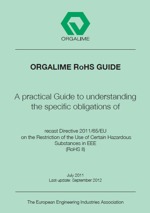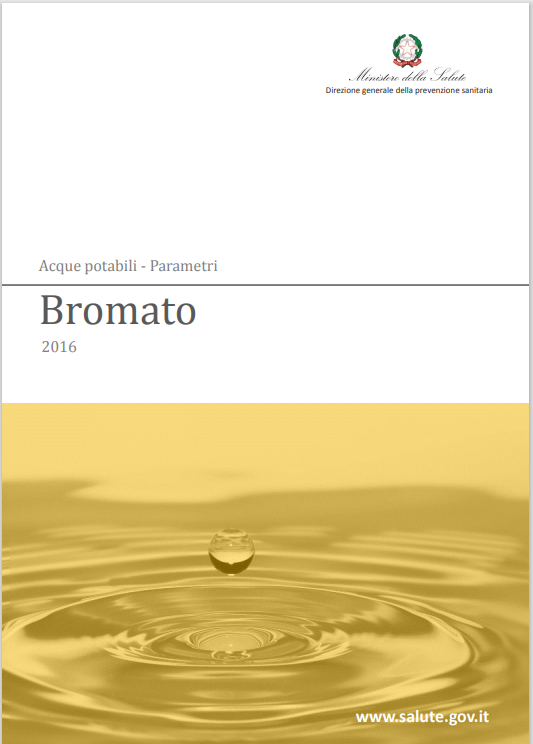Regolamento di esecuzione (UE) 2016/879
Regolamento di esecuzione (UE) 2016/879 della Commissione, del 2 giugno 2016, che stabilisce, ai sensi del regolamento (UE) n. 517/2014 del Parlamento europeo e ...

A practical Guide to understanding the specific obligations of Recast Directive 2011/65/EU on the Restriction of the Use of Certain Hazardous Substances in EEE (RoHS II)
Directive 2002/95/EC on the Restriction of Use of Certain Hazardous Substances in Electrical and Electronic Equipment (known as the “RoHS Directive” or “RoHS I”) restricts the use of lead, cadmium, mercury, hexavalent chromium, polybrominated biphenyls and polybrominated diphenylethers in certain electrical and electronic equipment since 1st July 2006.
In December 2008, the European Commission proposed to recast Directive 2002/95/EC.
The result of this recast is Directive 2011/65/EU (hereafter referred to as the “Recast RoHS Directive” or “RoHS II”), which was finally adopted on 27 May 2011.
The Recast RoHS Directive has been published in the Official Journal of the EU on 1st July 2011 and entered into force on 21st July 2011.
Member States will have to transpose the Recast RoHS Directive into national law by 2nd January 2013 at the latest.
The initial RoHS Directive 2002/95/EC and its successive amendments1 will be repealed with effect from 3rd January 2013.
Notwithstanding other EU legislation and Regulation (EC) No 1907/2006 (REACH) in particular, as of its entry into force, the Recast RoHS Directive is a critical reference for hazardous substance restrictions in electrical and electronic equipment.
The purpose of this ORGALIME Guide is therefore to explain the main changes and obligations arising from the recast, and to identify their consequences for ORGALIME industries.
This guide reflects the best knowledge of industry experts across Europe and the state of the art at the moment of its publication.
The principles contained in this Guide are however not legally binding. A binding interpretation of Community legislation is the exclusive competence of the European Court of Justice. ORGALIME also recommends to producers, when applying this Guide and its principles, to always refer to the national legislation of the Member State they are dealing with.
This ORGALIME Guide is to be considered as complementary to other ORGALIME Guides on the WEEE and RoHS Directives.
Until repeal of the initial RoHS Directive 2002/95/EC, with effect from 3rd January 2013 these other Orgalime Guides remain valid and should be consulted in parallel.
In addition, ORGALIME has also published a Guide on the REACH Regulation3, which provides further complementary information to this Guide.
Luglio 2011
GUIDE RoHS II - ORGALIME
Regolamento di esecuzione (UE) 2016/879 della Commissione, del 2 giugno 2016, che stabilisce, ai sensi del regolamento (UE) n. 517/2014 del Parlamento europeo e ...

ID 18793 | 26.01.2023 / In allegato
I bromati di sodio e di potassio sono dei potenti ossidanti, usati principalmente nelle soluzioni neutralizzanti per p...

ID 21230 | Last update: 22.01.2024
REACH Authorisation Decisions List of authorisation decisions adopted on the basis of Article 64 of Regul...
Testata editoriale iscritta al n. 22/2024 del registro periodici della cancelleria del Tribunale di Perugia in data 19.11.2024